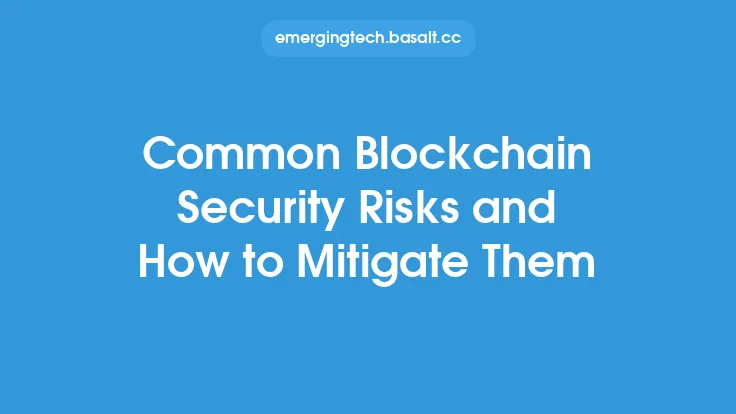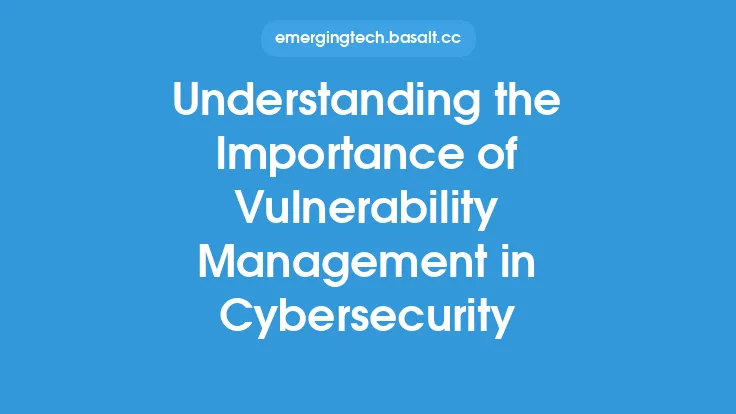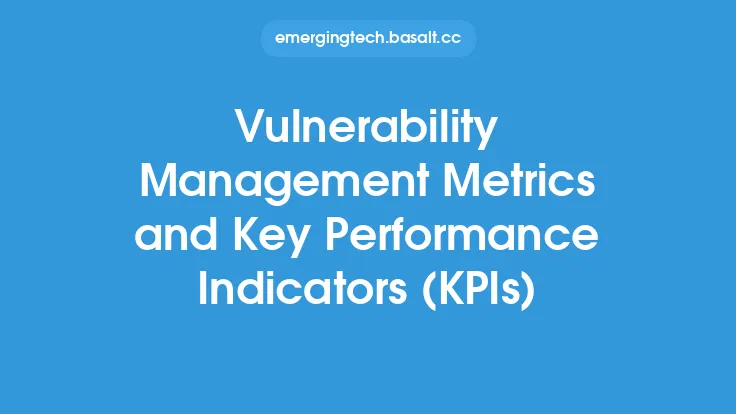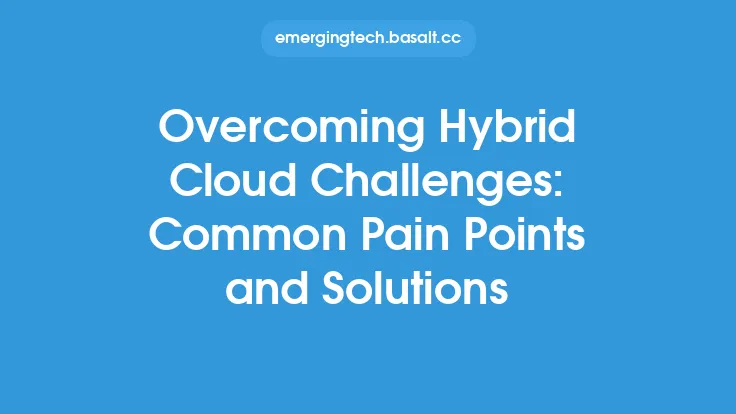Effective vulnerability management is crucial for maintaining the security and integrity of an organization's computer systems and data. However, many organizations face numerous challenges in implementing and maintaining a successful vulnerability management program. These challenges can range from lack of resources and expertise to the sheer volume of vulnerabilities that need to be addressed. In this article, we will explore some of the common vulnerability management challenges and provide guidance on how to overcome them.
Introduction to Vulnerability Management Challenges
Vulnerability management is a continuous process that involves identifying, classifying, prioritizing, and remediating vulnerabilities in an organization's systems and applications. The goal of vulnerability management is to reduce the risk of exploitation by attackers and prevent security breaches. However, many organizations struggle to implement effective vulnerability management due to various challenges. These challenges can be broadly categorized into people, process, and technology-related issues. People-related issues include lack of skilled personnel, inadequate training, and insufficient resources. Process-related issues include inadequate policies, procedures, and standards, as well as poor communication and coordination among teams. Technology-related issues include the complexity of systems and applications, the sheer volume of vulnerabilities, and the limitations of vulnerability management tools.
Common Vulnerability Management Challenges
One of the most significant challenges in vulnerability management is the sheer volume of vulnerabilities that need to be addressed. With new vulnerabilities being discovered every day, it can be overwhelming for organizations to keep up with the pace of vulnerability discovery and remediation. Another challenge is the lack of skilled personnel and resources. Many organizations lack the expertise and resources needed to implement and maintain a successful vulnerability management program. Additionally, the complexity of systems and applications can make it difficult to identify and remediate vulnerabilities. For example, modern systems and applications often consist of multiple components, including operating systems, software applications, and hardware devices, which can make it challenging to identify and prioritize vulnerabilities.
Overcoming Vulnerability Management Challenges
To overcome the challenges of vulnerability management, organizations need to implement a structured approach that includes people, process, and technology components. First, organizations need to establish a vulnerability management team that includes skilled personnel with expertise in vulnerability management, security, and IT operations. The team should be responsible for developing and implementing vulnerability management policies, procedures, and standards. Second, organizations need to implement a vulnerability management process that includes vulnerability identification, classification, prioritization, and remediation. The process should be automated as much as possible using vulnerability management tools and technologies. Third, organizations need to invest in vulnerability management tools and technologies that can help identify, prioritize, and remediate vulnerabilities. These tools include vulnerability scanners, penetration testing tools, and patch management tools.
Implementing a Vulnerability Management Program
Implementing a vulnerability management program requires a structured approach that includes several steps. The first step is to establish a vulnerability management team and define the scope of the program. The second step is to develop vulnerability management policies, procedures, and standards. The third step is to implement a vulnerability management process that includes vulnerability identification, classification, prioritization, and remediation. The fourth step is to invest in vulnerability management tools and technologies. The fifth step is to monitor and evaluate the effectiveness of the program and make continuous improvements. Organizations should also establish a continuous monitoring program to identify and remediate vulnerabilities in real-time.
Best Practices for Vulnerability Management
There are several best practices that organizations can follow to implement effective vulnerability management. First, organizations should implement a risk-based approach to vulnerability management, which involves prioritizing vulnerabilities based on their potential impact and likelihood of exploitation. Second, organizations should use automated vulnerability management tools and technologies to streamline the vulnerability management process. Third, organizations should establish a continuous monitoring program to identify and remediate vulnerabilities in real-time. Fourth, organizations should provide regular training and awareness programs for employees on vulnerability management and security best practices. Fifth, organizations should establish a incident response plan to respond to security incidents and breaches.
Conclusion
In conclusion, effective vulnerability management is crucial for maintaining the security and integrity of an organization's computer systems and data. However, many organizations face numerous challenges in implementing and maintaining a successful vulnerability management program. To overcome these challenges, organizations need to implement a structured approach that includes people, process, and technology components. By establishing a vulnerability management team, implementing a vulnerability management process, investing in vulnerability management tools and technologies, and following best practices, organizations can reduce the risk of exploitation by attackers and prevent security breaches. Additionally, organizations should continuously monitor and evaluate the effectiveness of their vulnerability management program and make continuous improvements to stay ahead of emerging threats and vulnerabilities.





